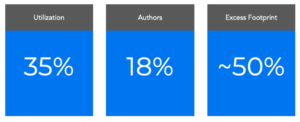If you’ve been around the SAP Analytics ecosystem enough years, you’ve probably either a) observed or b) created some turmoil around SAP’s Statement of Direction on SAP BusinessObjects. I know some of you that created some of that turmoil. You know who you are.
In the early days of SAP Analytics Cloud (then BusinessObjects Cloud, or the host of other product names it’s probably had that I can’t remember) the messaging felt clunky and poorly defined by SAP from a roadmap perspective. Customers asked “How do I use this alongside of my SAP BusinessObjects environment?” and “Is this a replacement?”, followed closely by “How do I migrate my content from SAP BusinessObjects to SAP Analytics Cloud?”. Riiiiiiiiight. These years later, the Statement of Direction document is a living and breathing thing that SAP is using as a mechanism to make clearer where things are headed. However, as excited as SAP is about its latest endeavors in analytics, customers have feared being left behind in their many years of investment in SAP BusinessObjects.
That direction, and those lingering questions, force customers to ask “Where to next?”. Certainly, SAP Analytics Cloud could be on the list. However, in a world where it’s rare for an enterprise to own just one BI/Analytics tool, they are forced to thoughtfully critique what to do with potentially decades of content that is not convertible to new tools, even within the SAP Analytics ecosystem. I know…I know….you can bridge the two at the moment in inelegant ways and eventually, most likely obsolete ways. But the last question I get asked is “For how long?” and “What will it cost me to peel the two apart again?”. I honestly can’t tell you. I don’t envy you.
The team at Sherlock Meta is working hard to help SAP BusinessObjects customers with a starting point, though. With real data and partnership with over 400 customers, we have an incredibly broad perspective on where the typical customer will start from. Let’s talk about some real hard numbers.

Let’s break down what that means:
- 35% of licensed users ever log on and use SAP BusinessObjects. That means 65% of the people that have been mapped to a system never even use the tool set via a browser in the BI Launch Pad, or gasp…InfoView. This significantly affects how you consider licensing and capacity planning.
- 18% of those users actually author content. This was always a theory, going back to the beginning of time, that the majority of users just want to consume content. They don’t want to build it all day. They crave information, not time writing queries and waiting impatiently for the results.
- It seems pretty clear that many customers are oversubscribed in their infrastructure footprint to run SAP BusinessObjects when they reach more than a few nodes of capacity. Sherlock Meta paints the picture starting at how the user interacts with the system, it analyzes how they build and consume content, it understands how developers author Universes, and it knows how those Universes consume data, all within the context of the SAP BusinessObjects BI Platform and the infrastructure that powers it.
Look, I really do empathize with you. This has been a part of my career for 20+ years. This journey to “what’s next?” has already started for many customers. Maybe you are thinking about it. Maybe the time is right for you to evaluate, and maybe it isn’t. You have to consider the expense of software, hardware, human capital, and dare I say, emotional baggage to unwind all that has been built in any platform as monolithic as this.
Let’s be proactive and prescriptive, not reactive and full of subjective ideas on how we’ve done so far on our investment in analytics. The team at Sherlock Meta are crazy well equipped to help you begin that journey with a thoughtful retrospective, looking at where you’ve been in your analytics journey and where you need to be next to have the best possible analytics experience for your users. Our ultimate goal is to help prevent organizations from overspending on the imminent impact of change in analytics investment strategy and we’re happy to help.
